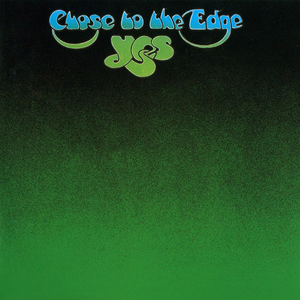Published on Sep 10, 2002
Ever since I bought my first Yes album when I was about 16 years
old (and, no, kids, it wasn’t
90125), I’ve noticed that my musical tastes have changed.
What I used to go nuts over at 16 sometimes seems to be a bit
melodramatic at 31. Add into this the level of distrust I’ve earned
from the diehard Yes fans (ever since my little treatise on
Tales From Topographic Oceans back in ’97), and you have a
situation where people cringe any time I dust off a Yes album to
review.
In the case of
Close To The Edge, Yes’s 1972 release (and final album
featuring the “classic” lineup of Jon Anderson, Steve Howe, Chris
Squire, Rick Wakeman and Bill Bruford), I’m reminded of a line from
The Simpsons after Marge reveals the painting of a naked Mr.
Burns: “I know what I hate… and I don’t hate this.”
Nope. I actually like this album – so much so that I’d easily
call this the best release from Yes’s early ’70s work. Keeping the
self-indulgent moments of their style to a minumum, Anderson and
crew tackle a mere three songs but make things sound like a
symphony.
As much as I don’t like reviewing an album on a track-by-track
basis, it’s hard to not do so when there are only three tracks to
discuss. The title track, a side-long opus clocking in at 18
minutes, does have a few of the “self-indulgent” moments where
musical virtuosity sometimes is presented over the importance of
the actual song. But, to Yes’s credit, this one minor slip occurs
right at the beginning of the track – after the nature sound-effect
intro, guitarist Howe leads the charge with a solo that just
doesn’t seem to fit the song. Once the opening notes of the main
body of the song begin, though, Yes rarely looks back, and creates
a powerful song. The energy of this track rises and ebbs at times
(I’d have liked a little more energy on the portion I believe was
labeled “I Get Up, I Get Down”), but it’s a natural flow, and
before you know it, 18 minutes have gone by in the blink of an
eye.
If the track “Close To The Edge” shows the potential of Yes at
this stage in their career, the next two tracks absolutely seal the
deal. “And You And I” is a gentle, melodic piece which knows just
when to throw in the right amount of bombastic energy. The
interplay between Howe’s guitar work and Wakeman’s keyboards (not
to mention Anderson’s vocals) is the sweet spot of this work,
creating a harmonious texture that keeps the song flowing.
The closing track, “Siberian Khatru,” is a mirror image of “And
You And I” in terms of approach, but there is not a single wasted
note on this track – a song which is quite possibly the best one
from this stage of Yes’s career (albeit overshadowed by “All Good
People” and “Roundabout”). Again, the chemistry between Howe and
Wakeman is what really keeps this track flowing, as does the solid
rhythmic backbone of Bruford and Squire. The die-hard Yes fans know
this one is a classic – and if there is any track just waiting to
be re-discovered by classic rock radio, this is the one.
As overindulgent as prog-rock can get, Yes shows on
Close To The Edge that there was a way to balance musical
virtuosity with pop sensibility, without weakening either. As much
as I believe certain Yes albums were overblown in their bombastic
approaches,
Close To The Edge is almost a perfect picture – and even the
flaws are minor in comparison.
